This post may contain affiliate links. Please read our disclosure policy.
This gluten free pastry flour blend is a lightened and enriched version of our all purpose gluten free flour blend. Use it in everything from gluten free pie crust and scones to biscuits and puff pastry. You can even make it dairy-free!
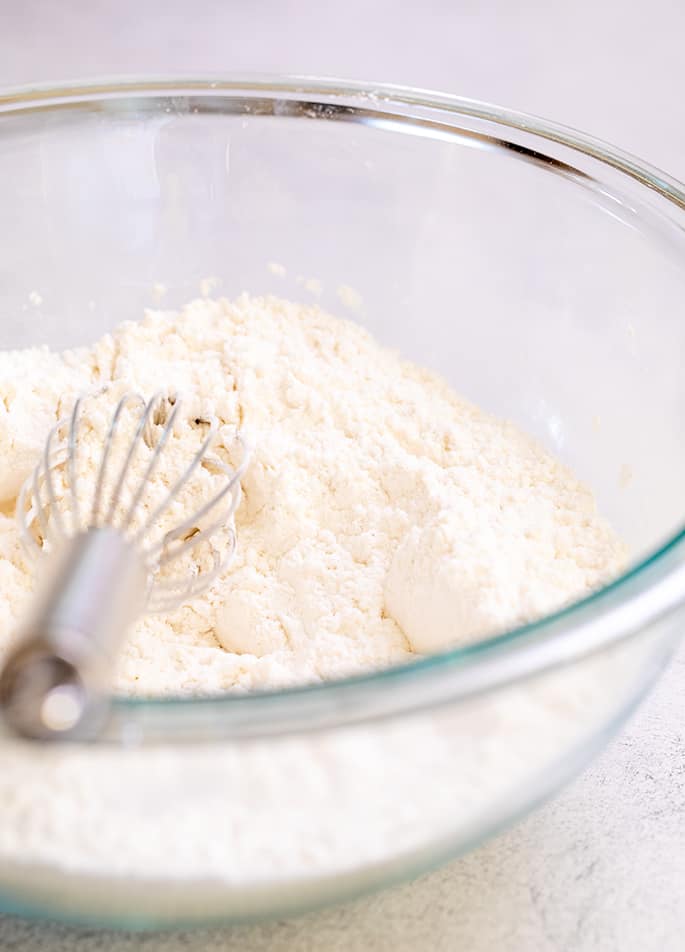
Why use gluten free pastry flour in baking pastry?
Whenever I make gluten free pastry, not in recipe development but in my life, and for myself and my family, I use this recipe for gluten free pastry flour. My two basic recommended all purpose gluten free flour blends are Better Batter (the original blend) and Cup4Cup.
I almost always use Better Batter in my everyday baking. It is an all purpose flour, and isn't designed specifically for pastry or any other specialty application.
Cup4Cup is, at base, a pastry flour. It has a lot of starch, and a lot of milk powder. If you use it (or my mock Cup4Cup blend), then that's your pastry flour, just as it is.
But using Better Batter and building on it to make cake flour (with cornstarch and salt) or pastry flour (with cornstarch and milk powder) simplifies my baking life. And simplicity is always welcome.
You'll notice that most of my recipes for different types of pastry here on the blog call for an all purpose gluten free flour, not for pastry flour. Sometimes, I'll add cornstarch and milk powder as additional ingredients, but often I don't.
Using an all purpose GF flour in most recipes keeps things simpler and more approachable—and it works. But if you want to take your pastry-baking to the next level, and do it easily, use this formula.
This way, you'll turn Better Batter into pastry flour. Then, use that in place of Better Batter in all types of pastry recipes here on this site that call for an all purpose gluten free flour, in recipes like gluten free choux pastry and the other gf recipes below.
You must use a kitchen scale
Building any sort of blend requires you to use a digital kitchen scale for precise measurements. Volume measurements are inherently unreliable from unavoidable human error and lack of standardization in volume measuring tools like cups.
For consistent results in baking, you need the right ingredients—measured accurately. The flour blend you use in any recipe is the foundation of your success. It must be measured right.
How to use gf pastry flour
In conventional baking, pastry flour has less protein (in the form of gluten) than all purpose flour. That makes more tender baked goods.
In gluten free baking, our flour blend has protein from rice flour, but it also has xanthan gum as a binder. That's why an all purpose flour like Better Batter performs like an all purpose flour.
But rather than playing with all the proportions of Better Batter, here we add more starch to lighten the blend. And we add milk powder to soften it and create browning and flakiness.
Make classic gluten free pie crust
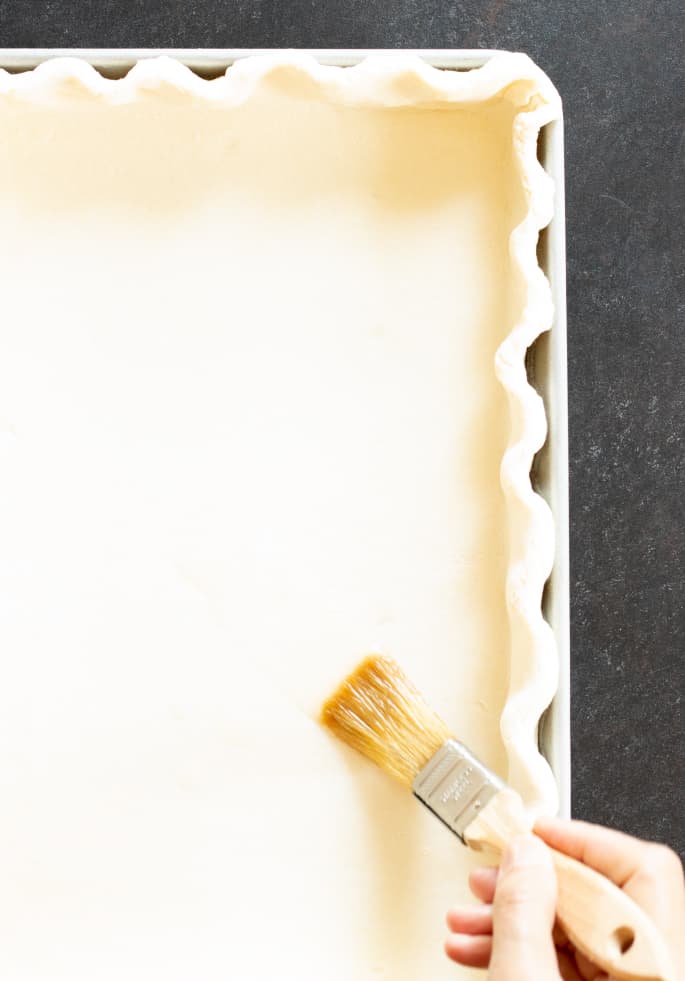
Our most classic gf pie crust is made with gluten free pastry flour, baking powder, salt, cold butter, and ice water. If you watch the how-to video in this post, you'll see me make the pastry flour, and then the raw pie crust.
Above, you see the bottom crust for our gluten free apple pie. Both recipes call for an all purpose gluten free flour blend, but ideally you'd use pastry crust.
Pastry crust will enhance every aspect of a light and flaky crust that browns beautifully and is tender in the center. Of course, you'll still have to use the proper cold ingredients and handle them with a light touch, as with all pastry.
Make laminated gluten free biscuits
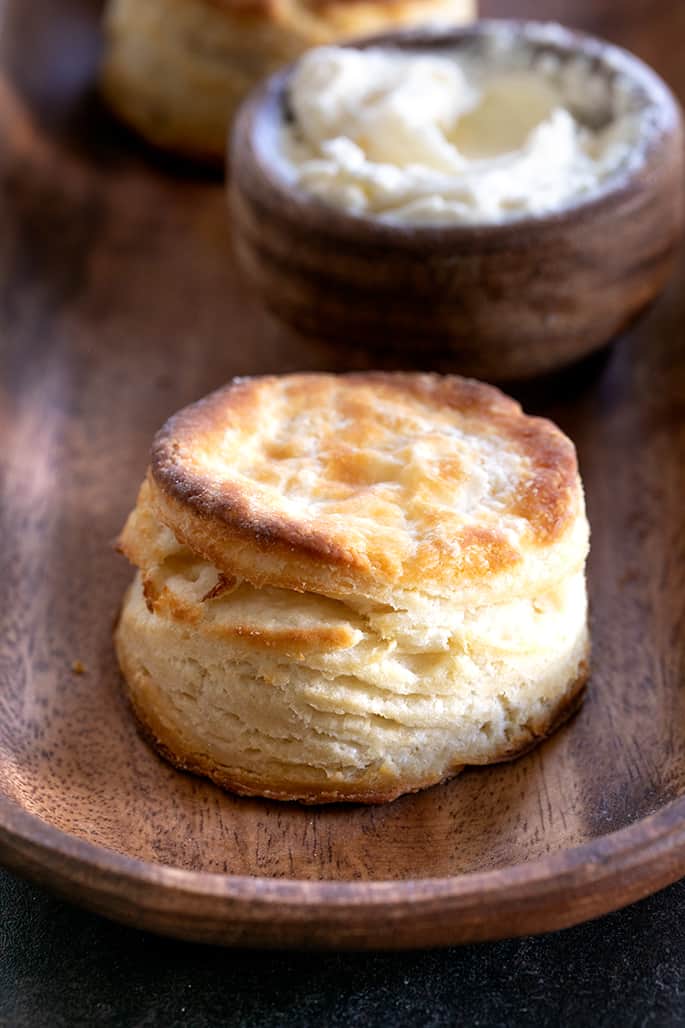
These gluten free buttermilk biscuits are made by laminating the dough similarly to how you would make puff pastry. Lamination refers to the process of folding a packet, or chunks, of butter into flour, over and over to create the layers that you see in the biscuit above.
You can make this recipe, like the others, with a classic all purpose gluten free flour blend. But if you instead make it with pastry flour, your biscuits will be both tender and more flaky.
Of course, pastry flour is perfect for our gluten free drop biscuits, too. Just replace both the all purpose gluten free flour blend and the cornstarch in that recipe with this pastry flour blend, gram for gram.
Make a gluten free puff pastry tart
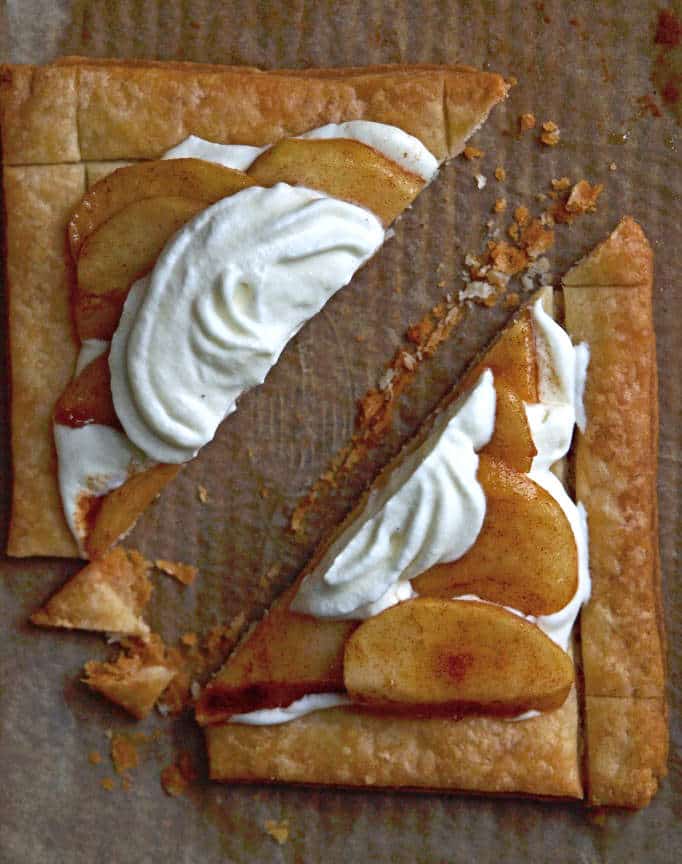
The ultimate laminated gf pastry dough is gluten free puff pastry. The simple apple tart above is made with a small sheet of puff pastry that's been scored, docked, and baked until golden brown and super flaky.
Making puff pastry is not difficult, but it does take time—even though most of the time is inactive time. You have to chill the dough in the refrigerator after each step, in between each “turn.”
The very idea of puff pastry can be very intimidating to make from scratch, so the flour I called for is an all purpose gluten free flour. It makes a lovely puff pastry—but all its best qualities are enhanced with pastry flour instead.
Make simple gluten free scones
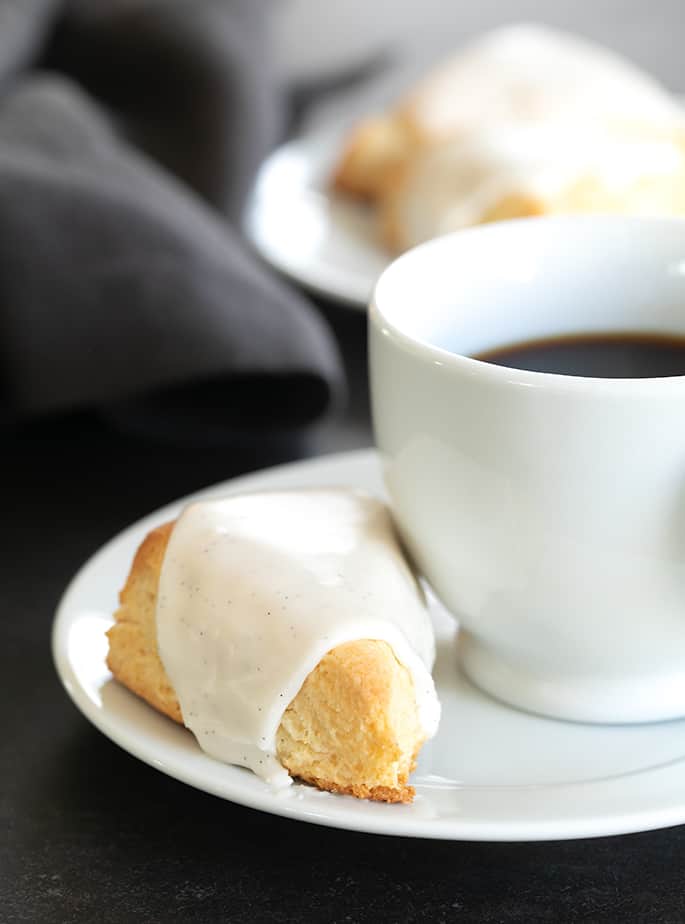
These petite gluten free vanilla scones are made with a bit less butter than usual for a scone, but they also have an egg in the dough. The egg adds richness, and also structure to the scones.
This recipe calls for all purpose gluten free flour, plus dry milk powder and cornstarch. I often include the elements of pastry flour (cornstarch, milk powder) as separate ingredients, because the mention of “pastry flour” can feel overwhelming.
In any recipe that calls for these ingredients separately, you can replace all of those ingredients with pastry flour, gram for gram. So in these scones, that would mean 284 grams total gluten free pastry flour (227 g + 30 g + 27 g). That's only slightly more than 2 cups of pastry flour.
Substitutions for gluten free pastry flour ingredients
How to make gluten free dairy free pastry flour
In place of the cow's milk powder in this recipe for gluten free pastry flour, you can use powdered nondairy milk. I like Native Forest brand coconut milk powder best.
If you'd like to avoid milk powder entirely, you can use superfine blanched almond flour. You'll need different proportions. For one cup of nondairy gluten free pastry flour, the proportions are:
- 105 grams Better Batter all purpose gluten free flour blend (75% of total)
- 18 grams cornstarch (13% of total)
- 17 grams superfine blanched almond flour (12% of total)
How to make gluten free, corn-free pastry flour
If you can't have cornstarch, you can try using arrowroot or even more potato starch (not potato flour).
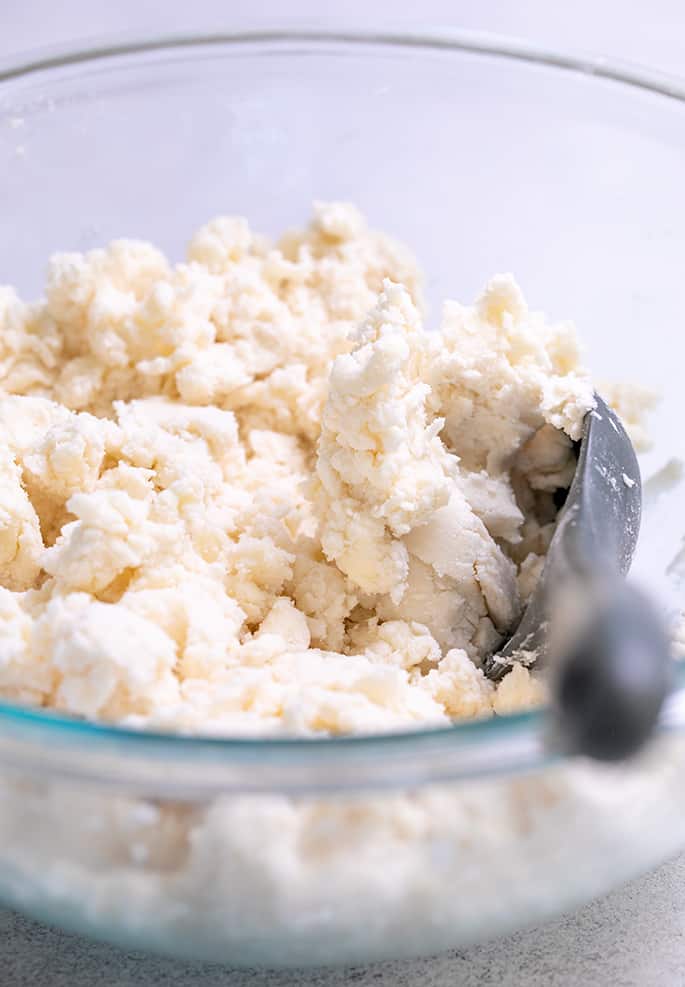
How to make gluten free pastry flour, step by step
Gluten Free Pastry Flour

Equipment
- Simple digital kitchen scale
Ingredients
- 224 grams Better Batter all purpose gluten free flour blend, (80% of total) (See Recipe Notes)
- 28 grams cornstarch, 10% of total
- 28 grams dry milk powder, 10% of total (See Recipe Notes)
Instructions
- To make a gluten free flour blend of any kind, you will need a simple digital kitchen scale. Turn the scale on, and switch to grams (from pounds) if necessary by pressing the appropriate button on your scale.
- Place a large bowl on the scale and press “tare” to zero out the weight of the bowl. Add the Better Batter (or mock Better Batter blend) to the bowl, bit by bit, until the scale display reads 224 grams. This first ingredient can be added quickly and without much care, since you can remove some flour if you add too much.
- Press the “tare” button to zero out the weight of the Better Batter flour blend. Add the cornstarch, bit by bit, until the scale display reads 28 grams.
- Press the “tare” button to zero out the weight of the cornstarch. Add the milk powder, bit by bit, until the scale display reads 28 grams.
- Whisk vigorously to combine very well. Use in a recipe like pie crust, or place in a lidded container and store in a cool, dark place until you’re ready to use it to make pastry.
Video
Notes
- 42 grams (about 1/4 cup) superfine brown rice flour (30%)
- 42 grams (about 1/4 cup) superfine white rice flour (30%)
- 21 grams (about 2 1/3 tablespoons) tapioca starch (15%)
- 21 grams (about 2 1/3 tablespoons) potato starch (15%)
- 7 grams (about 1 3/4 teaspoons) potato flour (5%)
- 4 grams (about 2 teaspoons) xanthan gum (3%)
- 3 grams (about 1 1/2 teaspoons) pure powdered pectin (2%)
I use whole milk powder and nonfat dry milk powder interchangeably here. Since I never make pastry without fat, I don’t notice a difference in the ultimate recipe regardless of which milk powder I’ve used. If you can’t have dairy, you can use Native Forest coconut milk powder, or the following altered formula for 1 cup of gluten free dairy free pastry flour:
- 105 grams (mock) Better Batter all purpose gluten free flour blend (75% of total)
- 18 grams cornstarch (13% of total)
- 17 grams superfine blanched almond flour (12% of total)
Nutrition information is automatically calculated, so should only be used as an approximation.
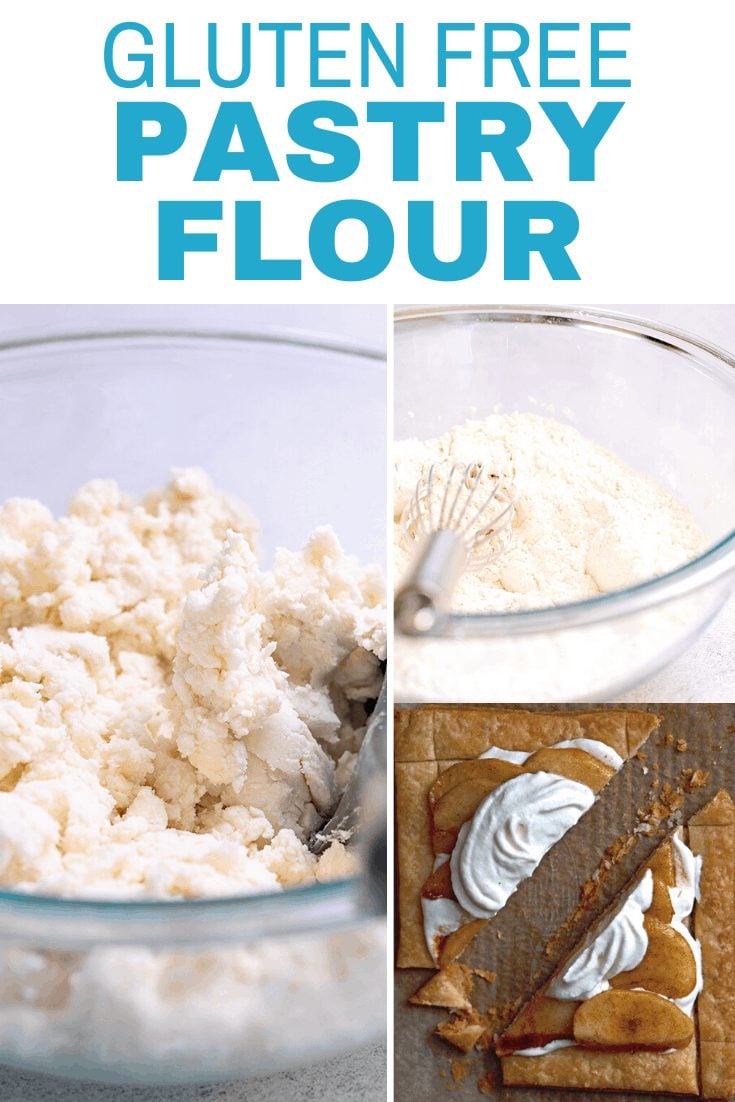

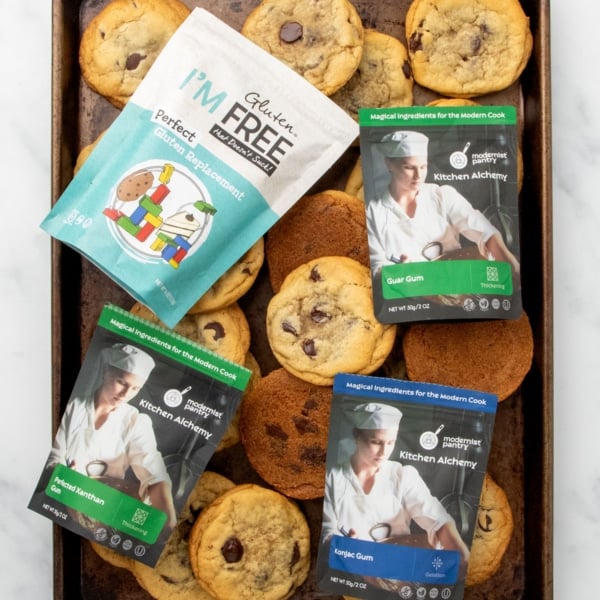


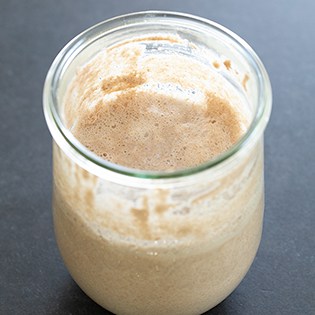









Hi
I was wondering if Schar B or Schar C can be used a a flour base?
Or even Caputo based on gluten free wheat based
Hi, Elina, I’m afraid I don’t know since I’m not familiar with either of those Schar flour blends. I will say that you can’t use Caputo, which is really best for yeast bread, as a pastry flour base, no.
Hello, Can I use buttermilk powder in this flour blend? I have The Saco Pantry brand.
I’ve never tried that in the pastry flour blend, Janie, and it isn’t the same as milk powder precisely, so I’d hesitate. I never advise using an ingredient just because you have it, unfortunately.
Hi Nicole,
Do you have a cookbook for us old school cooks/bakers who don’t have a computer in the kitchen?
Hi, Elizabeth, I have 5 traditionally published cookbooks that are available wherever books are sold. You can read a little about each of them on this gluten free cookbooks page on the blog. But if you’re on my mailing list, you’ll learn about the new cookbook I’m writing (my first in nearly 10 years) that will come out next fall that I think will be the best 101 on gluten free baking yet.
Would this work with another starch instead of cornstarch, such as arrowroot? I am intolerant to corn as well as gluten.
Hi, Jacki, you can probably use arrowroot, yes. For more information, please see the text of the post under the heading “How to make gluten free, corn-free pastry flour”
Hi Nicole
I cannot find potato flour here in South Australia, what can I use instead. I have been following you & your recipes for many years but I have just moved to a life style village and I make cakes etc. (especially dark heavy fruit cakes) for gifts and donations to charities and now have celiac and intolerant neighbours and family including myself. This is the first time I have come across it in your recipe, I know you will be able to help me.
regards Sue
Hi, Sue, your question is really about the mock Better Batter recipe, and I discuss in that post that there is no substitute for potato flour. I recommend you use my mock Cup4Cup instead. I hope that’s helpful, and thanks for the kind words!
hi,
your flour blends look amazing. my son has autism and has many food allergies. he loves certain foods that he simply cannot have. one of his favorites is a pastry hand pie recipe with flour butter and semolina . what would you suggest to use? he cannot have brown rice, millet or Xantham gum he is limited to corn flour, tapioca, white rice flour, arrowroot and potato starch any feedback would be greatly appreciated
Hi, Susan, I’m afraid I don’t have any suggestions for a flour blend without brown rice flour. I’m so sorry I wish I knew how to avoid it, but it’s in every blend I provide a recipe for or recommend buying.
Do you have any recommendations if starting with King Arthur measure 4measure? Better Batter doesn’t seem to be available near me and Cup4Cup is twice the cost of King Arthur, so I tend to keep King Arthur on hand. In your experience, will the pastry flour recipe need to be adjusted or will it be as successful if I just follow the recipe as if I was using better batter?
I’m afraid that, in my experience, you will not be as successful, no. King Arthur’s Measure for Measure flour has gritty rice flour and is not a properly balanced blend, so it’s particularly difficult to use in pastry applications where the flour really shines through. I understand how frustrating that is, and I wish I had a better answer for you, but my only other suggestion is to make my mock “Better Batter” blend or my mock “Cup4Cup” blend instead.
Milk powder causes my mother horrible headaches. Is there anything I can use as a substitute at all?
Please see the text of the post under the heading “How to make gluten free dairy free pastry flour”
HELP! I have also purchased c4c but have not found how to make it into pastry flour; does it need cornstarch and milk powder? Or just milk powder?
Cup4Cup is essentially already a pastry flour. You don’t do anything to it to use it in pastries.